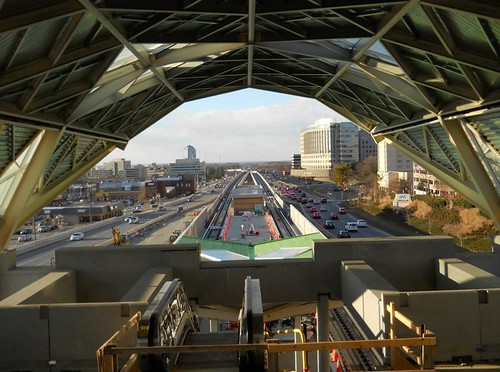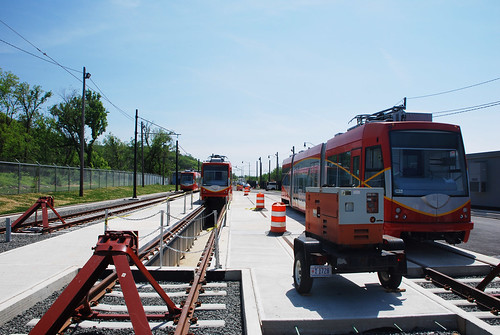WMATA still has not announced an official opening date for the Silver Line. But if crews can work out remaining construction problems quickly, the new Metro line could, potentially, maybe open for passengers as soon as Monday, July 28.

Greensboro Metro Station. Photo from Stephen Barna of the Dulles Corridor Metrorail Project.
That’s if workers complete all remaining construction as quickly as possible, and there are no hiccups during equipment testing or training, and the weather is good. So far, the last bits of construction aren’t quite on target to wrap up so soon.
The union is ready for a July opening
According to WMATA’s union president Jackie Jeter, Metro has instructed train operators to begin scheduling Silver Line shifts for “simulated service” starting on July 20.
Simulated service is the last step before opening for passengers. It’s a training and testing phase, during which Metro will operate the Silver Line as though it were open, but without carrying passengers.
Simulated service is supposed to take a week, so if it does begin on July 20, and there are no last minute problems, everything could be done and ready to go by the 28th.
This would be a month early, and it may still not happen
According to WMATA’s official schedule, final construction and testing could last through the end of August. To actually finish it all in July would be early, per that timeline.
Will they make it? During WMATA’s weekly conference call with reporters yesterday, Metro deputy general manager Rob Troup not only declined to confirm the July 20 date, but also cautioned that work crews are behind schedule on some of the last tasks.
Most of the remaining issues are minor. Tasks include painting hand rails and checking the public address systems, among others. The largest remaining task may be to correct water drainage problems on the station platforms.
So the July 28 date is by no means guaranteed, and it’s really not a delay if opening slips to August, or even September.
Thanks to good communication, we know what to expect
This timeline jives perfectly with what Troup said when Metro accepted control of the Silver Line on May 27. At the time, he said Metro budgeted 90 days for final testing and construction, but that they might not need the entire time.
WMATA gave the public a realistic range for how long this will take. Now that more detailed rumors are flying, we have the necessary knowledge to evaluate them. We know that July 28 is an achievable but optimistic timeline. We know that if it’s not met and opening comes a month or two later, that’s not a problem.
We know that dotting every “i” and crossing every “t” on a complex infrastructure project like the Silver Line is impossible to completely predict. But we know the Silver Line is getting really, really close.
So I’m tempering my expectations, but I’m still excited.
 Cross-posted at Greater Greater Washington.
Cross-posted at Greater Greater Washington.
June 10th, 2014 | Permalink
Tags: government, metrorail, transportation


















